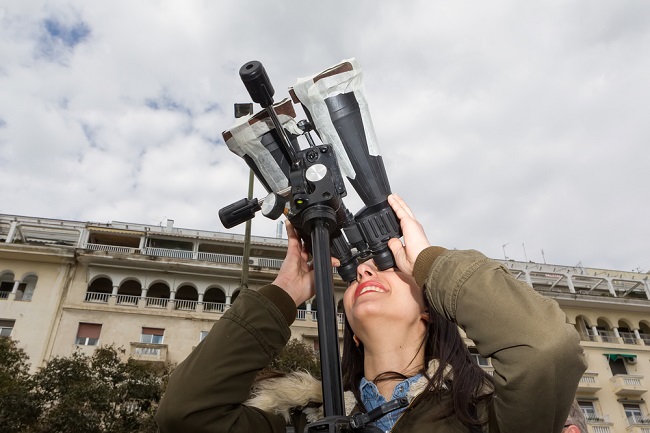Retinal disease is an eye disease that attacks the retina and causethe patient's vision disturbed. Pretinal disease will cause visual disturbances, such as blurred vision, lined vision,even up to vision loss.
The retina is located at the back of the eye. As part of the central nervous system, this part of the eye is connected to the brain and plays a role in capturing light from outside which will then be translated by the brain. This is what allows one to see.

In general, retinal disease is treatable. The type of treatment depends on the cause. Treatment aims to cure or relieve the symptoms caused by retinal disease. If left untreated, retinal disease can cause severe visual impairment and even blindness.
Symptoms of Retinal Disease
Symptoms of retinal disease that appear in sufferers vary, depending on the cause. However, the symptoms that generally appear in patients with retinal disease are visual disturbances in the form of:
- Blurred vision
- The field of view is limited
- Look floaters
- Seeing flashes of light or photopsia
- Sensitive to light
- Impaired ability to distinguish colors
Symptoms of retinal disease can develop slowly with age or develop rapidly. Symptoms of retinal disease can occur in one or both eyes.
When to go to the doctor
Immediately see a doctor if there are problems with vision, especially those that appear suddenly. In addition, you also need if you see floaters, flashes of light, or reduced vision, see an ophthalmologist immediately for immediate treatment.
Eye examinations need to be done periodically, according to a person's age. Children need to have an eye exam at least once as a toddler, school age, and teenager to check their vision development. A person is also recommended to undergo regular eye examinations when entering the age of 40 years once every 1 or 2 years.
A person who has risk factors for suffering from eye disease is also recommended to undergo regular eye examinations, even though they are not yet 40 years old. The risk factors in question are suffering from diabetes and hypertension, or having a family history of eye disease.
Example and Causes of Retinal Disease
The causes of retinal disease vary, depending on the type. Some of the most common types of retinal disease are:
1. Retinal detachment
Retinal detachment is a retinal disease that occurs due to a tear in the retina and causes the retina to detach from its normal position. Retinal detachment can occur due to changes in the condition of fluid in the eyeball or the appearance of scar tissue in the retinal area, especially in people with diabetes.
2. Retinoblastoma
Retinoblastoma is a retinal disease caused by the growth of cancerous tissue in the retina. Cancer tissue that forms can spread to other tissues, such as the brain and spine. Retinoblastoma is a retinal disease that is quite rare and usually occurs in children.
3. Retinitis pigmentosa
Retinitis pigmentosa is a genetic disease that affects the retina's ability to respond to light. Retinitis pigmentosa causes a decrease in the ability to see over time, but will not be completely blind. This disease is a genetic disease, so it can be passed from parents to their children.
4. Macular degeneration
Macular degeneration is a retinal disease caused by damage to the center of the retina. Macular degeneration will make vision blurry or there are parts that are not accessible to vision. Macular degeneration is triggered by increasing age and is at risk in someone who has a family history of macular degeneration.
5. Diabetic retinopathyk
Diabetic retinopathy is a retinal disease that arises as a complication of diabetes. Diabetic retinopathy causes damage to the retinal blood vessels, causing the retina to swell or there are abnormal blood capillaries that rupture. This condition causes vision to be blurred or disturbed.
6. Retinopathy of Prematurity (ROP)
Retinopathy of prematurity or ROP is a retinal disease that occurs in infants born prematurely. ROP occurs when the development of blood vessels in the baby's eyeball is not perfect and causes abnormal blood vessels to form in the eyeball. This abnormality will cause bleeding in the retina.
The risk of developing retinal diseases above can increase due to a number of factors, including:
- Age 40 years and over.
- Injury to the eye.
- Have a family history of retinal disease.
- Have a chronic disease, such as diabetes or hypertension.
Retina Disease Diagnosis
To diagnose retinal disease, the doctor will first ask the patient's symptoms. The doctor will also ask for the medical history of the patient and his family, especially if the patient has a family who has experienced retinal disease.
After that, the doctor will perform a thorough eye exam, including checking your visual acuity and eye movement. The doctor will then perform an ophthalmoscopy examination, which is an examination of the retina with special tools.
To determine the type and cause of the retinal disease suffered, the patient will be asked to undergo a supporting examination. Some of the additional tests that can be carried out include:
- Eye ultrasound, CT scan, and MRIThese three examinations can give a clearer picture of the retina visually. The goal is to help establish the diagnosis and treatment, including checking for possible injuries or tumors in the eye.
- Optical coherence tomography (OCT)This examination can display retinal images that are used to detect retinal abnormalities in macular degeneration.
- Test Amsler gridThis test is performed to test the acuity of central vision by using an instrument containing lined images for the patient to see. The patient will then be asked to describe the condition of the line seen.
- Eye angiographyAn angiography of the eye is done to see the retinal blood vessels. The examination will use a special fluid during the scan. Through this examination, the doctor can determine the presence of blockages, leaks, and abnormalities in the blood vessels in the eye.
- Test ggeneticGenetic testing is done to diagnose retinal diseases that arise due to hereditary factors. The doctor will take a sample of the patient's DNA from certain tissues, then it will be analyzed in a laboratory to see whether retinal disease is caused by genetic factors or not.
Retinal Disease Treatment
Treatment of retinal disease depends on the type and cause. Treatment aims to improve the patient's vision or prevent the disease from getting worse.
Treatment for retinal disease is generally carried out with special measures performed by an ophthalmologist. Some of the actions that can be taken are:
1. Injection of medicine in the eye
This injection is primarily aimed at the vitreous or clear gel in the eye. This procedure is used to treat macular degeneration, ruptured blood vessels in the eye, or diabetic retinopathy.
2. Vitrectomy
A vitrectomy is surgery to replace the gel in the part of the eye called the vitreous by injecting gas, air, or liquid into it. This procedure is done to treat retinal detachment or an infection in the eye.
3. Cryopexy
Cryopexy is a clotting of the outer wall of the eye to treat a torn retina. The goal is to slow down the damage caused by the injury and to return the retina to the wall of the eyeball.
4. Scatter laser photocoagulation(SLP)
SLP is a procedure to shrink new abnormal blood vessels or bleeding that is harmful to the eye. This procedure is usually used to treat diabetic retinopathy.
5. Pneumatic retinopexy
Pneumatic retinopexy is an injection of air or gas into the eye to treat certain types of retinal separation. This action can be combined with cyropexy or laser photocoagulation.
6. Scleral Buckling
Scleral Buckling is a method of repairing the surface of the eye to treat retinal detachment. This action is done by adding silicone outside the white part of the eye (sclera).
7. Implantation of retinal prosthesis
This method of treating retinal disease is done by attaching a retinal prosthesis through surgery. Retinal prosthesis implantation is performed for people who have difficulty seeing or suffer from blindness due to retinal disease, especially due to retinitis pigmentosa.
8. Laser therapy
Laser therapy is performed to repair a tear or hole in the retina. In addition to repairing a retinal tear, heating with laser light on the torn area will also cause scar tissue to form, which keeps the retina attached to its supporting tissue.
Complications and Prevention Retina Disease
Retinal disease that is not treated properly can lead to complications. Complications that can arise from retinal disease are blindness and permanent visual impairment. Therefore, it is important to have eye problems checked as early as possible.
People who are at risk for retinal disease, in addition to needing to undergo regular eye examinations, also need to control or treat their risk factors. For example, people with diabetes or hypertension need to undergo treatment and regular check-ups to the doctor so that their disease does not cause complications in the form of retinal disease.









